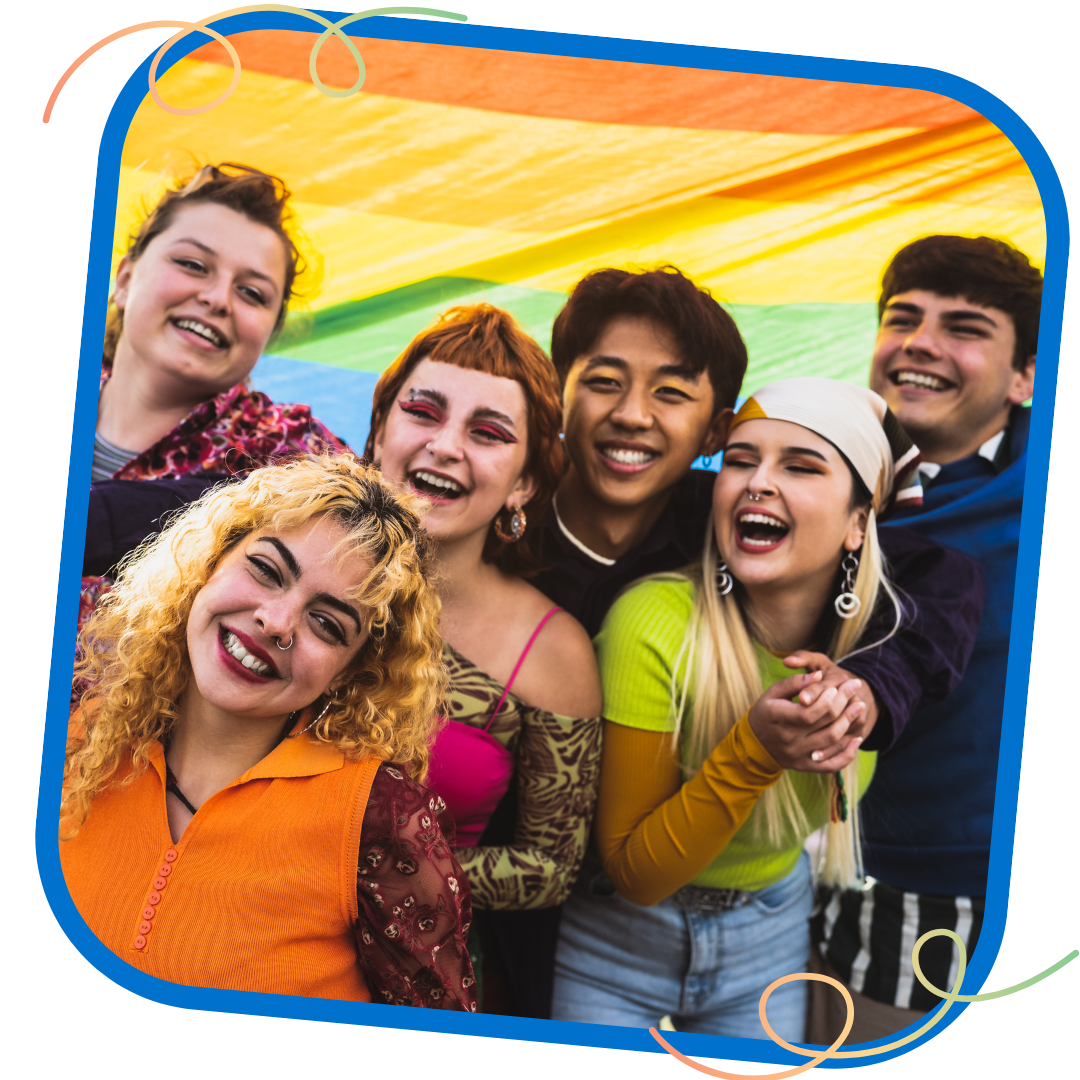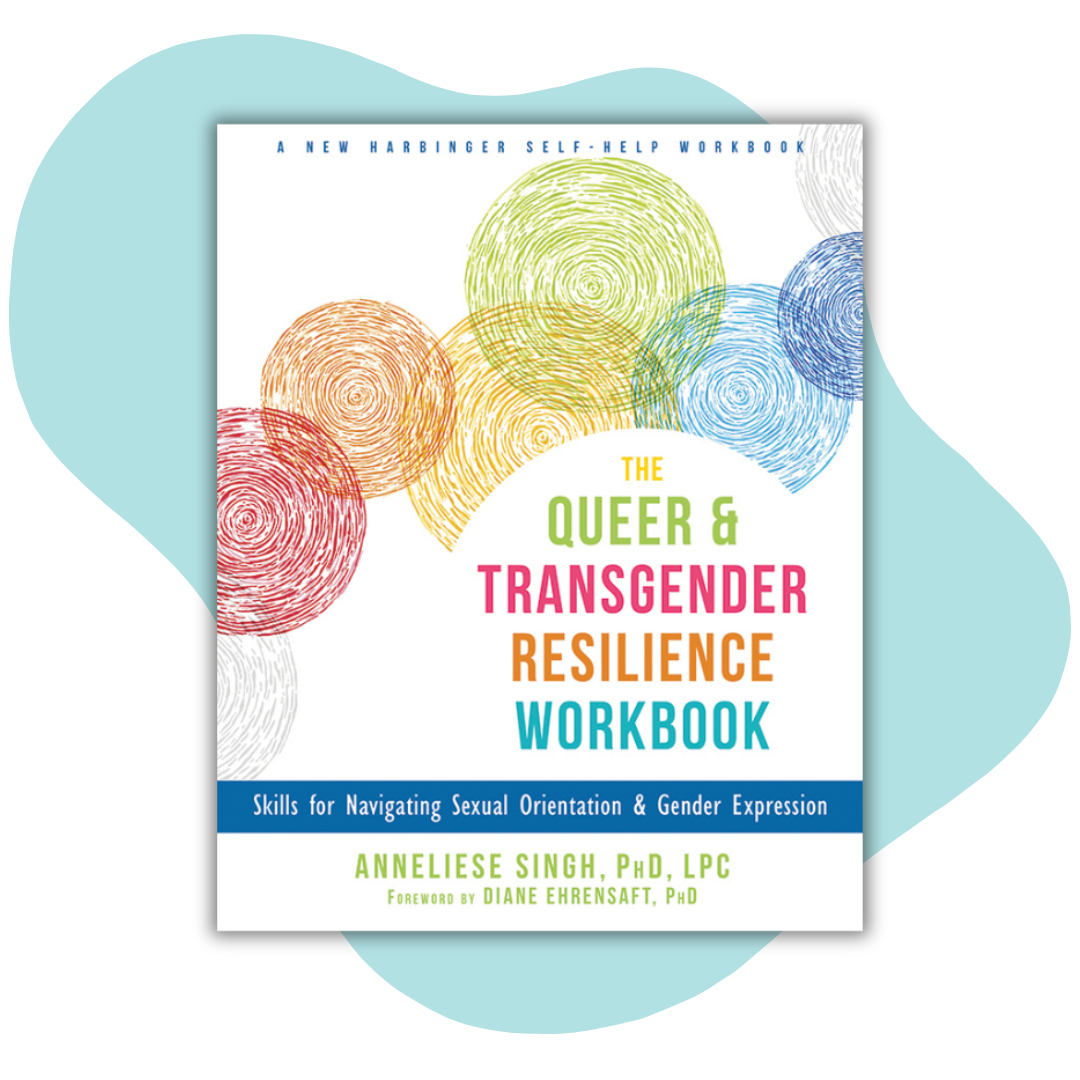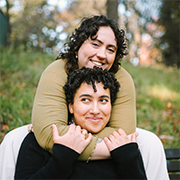Empowering LGBTQ+ Youth with Tools for Resilience
By Li Lock, PhD, MEd, Research Associate, ETR, Gillian Silver, MPH, CHES, Research Dissemination Specialist, ETR | December 7, 2023
What Is Resilience?
Resilience is the process and outcome of successfully adapting to difficult or challenging life experiences, especially through mental, emotional, and behavioral flexibility and adjustment to external and internal demands (APA). Put simply: resilience is adapting well in the face of adversity.
What Does Resilience Mean for LGBTQ+* Young People?
LGBTQ+ young people, especially those holding multiple, or intersecting, marginalized identities, are often faced with situations and environments where they must develop resilience to survive and thrive.
Rebelliousness, collectiveness, emotional intelligence, and logistical strategies are some ways that LGBTQ+ young people in a South Texas community-based participatory research (CBPR) study defined resilience (Williams et al., 2022). In another study involving qualitative interviews with LGBTQ+ young people and service providers in Toronto, resilience was defined as facing adversities across contexts and doing well while still in pain—continuing to show up, cope with mental health struggles, and have hope for the future even through continued adversity and trauma (Asakura, 2019).
Tools and Sources of Resilience
Where do LGBTQ+ young people find strength and joy as they navigate an unwelcoming or even hostile environments? Numerous studies have found that a primary source of resilience is supportive and affirming family, friends, peers, and school (see e.g., Kosciw, Palmer, & Kull, 2015; The Trevor Project, 2022). LGBTQ+ youth also leverage technology to find support, build community, and otherwise foster resilience. For example, Craig et al. (2021) found LGBTQ+ young people (age 14-29) were using social media to find emotional support, as well as for educational and entertainment purposes and to find LGBTQ+ specific information.
In their literature review, Di Cesare et al. (2023) found video gaming was a source of resilience among LGBTQ+ young people. In addition to providing a source of social support through gaming communities, video games provide an opportunity for identity exploration and development, a way to cope by temporarily distracting and escaping from stressors, and opportunities to practice civic engagement through individual intervention (e.g., addressing microaggressions among players) and digital collective action (e.g., protesting for policy change). Finding community and building resilience through technology is particularly important for youth with less in-person support, such as rural youth (Wike et al., 2021). 
Other forms of media and art are also sources of resilience for LGBTQ+ young people. Craig et al. (2015) found in their qualitative study of 19 LGBTQ+ young people that media provided a way to temporarily distract and escape from stressors; to feel stronger in seeing positive storylines and modelling among queer and transgender characters and celebrities, and in finding affirming content online; to express themselves and fight back against discrimination using online platforms; and to find and foster community through shared viewership and online connection to others with shared identities and experience.
In a photo elicitation study among multiply marginalized trans and gender diverse young people, artistic expression was viewed not only as a way to cope with challenges in their lives, such as being misgendered or bullied, but also to express oneself authentically, as a way to connect with others, and as a pathway toward agency (Austin et al., 2022).
Resilience and Health Equity
Thinking of this through the lens of ETR’s Health Equity Framework, sources of resilience can come from the four interconnected factors that influence and determine health equity: Individual Factors, Relationships and Networks, Physiological Pathways, and Systems of Power.
-
Individual factors are a person’s response to social, economic and environmental conditions that promote health equity through attitudes, skills and behavior that enable their personal and community’s health. Supporting positive development, including experiencing gender euphoria, artistic expression, and engagement in video games can support individual factors towards resilience.
-
Relationships and networks are connections with family, friends, parents, community, school and workplaces that promote health equity through support systems that encourage health-promoting choices. Having affirming family, friends, community members and peers can support an LGBTQ+ person’s resilience, as can connecting with others through social media and videogaming.
-
Systems of power are policies, processes and practices that can promote health equity through fair access to resources and opportunities that enable healthy lives. The opportunity to influence policy and educate community can be a way for LGBTQ+ young people to build collective power.
Why This Matters
LGBTQ+ youth should not have to live in a world where it’s required to be resilient. While everyone faces adversity and hardship in their lives to some degree, LGBTQ+ young people face additional stress and trauma simply for being who they are. This inequity has been exacerbated in our current sociopolitical environment. In 2023 alone, over 500 anti-LGBTQ+ bills have been introduced in legislatures across the U.S.
These bills, which create dangerous and discriminatory school policies, set up substantial barriers to gender-affirming medical care, impede the ability to participate in sports, and remove or limit anti-discrimination legal protections significantly negatively impact the mental health and well-being of LGBTQ+ young people (e.g., Dhanani & Totton, 2023; The Trevor Project, 2023).
Beyond the tangible, structural barriers legislation can create for queer youth, it also creates an environment in which queerphobia, and transphobia are socially normalized. This hostile social environment fosters in young queer and trans folx as a sense of not belonging, and of being stigmatized (wrong, bad, or even evil) simply for existing in the world authentically. This threatens young peoples’ sense and reality of safety in their home communities – particularly among queer and trans youth who hold multiple marginalized identities such as Black, Indigenous, Person of Color and Disabled.
It is for this reason that resilience is so important – resilience can act as a protective factor against the numerous negative health outcomes that can result from living in a hostile environment. In fact, higher levels of resilience are associated with better mental health outcomes (The Trevor Project, 2022).
Resilience In Action
Through ETR’s Youth Engagement Network, we have had the privilege of working with organizations that center young people in the work that impacts them. One of our partners, Michigan Organization on Adolescent Sexual Health (MOASH) envisions a society that respects and celebrates youth identities, advocacy, and informed choices and moves towards its vision using the core values of anti-oppression, collaboration, centering youth voices. In its role in centering youth voices, MOASH holds five advisory councils: MY Voice (Michigan Youth Voice), Michigan Youth Racial Equity Council (MY REC), Michigan Youth Sexual Health for Adolescents Rooted in Equity (MY SHARE), Michigan Youth Faith Youth Advisory Council (MY FAITH), and Michigan Youth Trans Voice (MY TV).
Adolescent Sexual Health (MOASH) envisions a society that respects and celebrates youth identities, advocacy, and informed choices and moves towards its vision using the core values of anti-oppression, collaboration, centering youth voices. In its role in centering youth voices, MOASH holds five advisory councils: MY Voice (Michigan Youth Voice), Michigan Youth Racial Equity Council (MY REC), Michigan Youth Sexual Health for Adolescents Rooted in Equity (MY SHARE), Michigan Youth Faith Youth Advisory Council (MY FAITH), and Michigan Youth Trans Voice (MY TV).
My TV advocates for Transgender/Non-binary students in Michigan and aims to improve conditions for these youth in their communities. As a group, MY Trans Voice engages in professional development opportunities to increase confidence and ability to advocate on behalf of the Transgender/Non-binary community. In recent years, MY TV has presented at adolescent sexual health conferences, written resource documents, tabled at Pride events, and held a gender-expansive clothing drive, all efforts that serve to build and support Trans youth community and resilience. This year, members of MY TV members have developed their voices to advocate for themselves and their communities and attended a Youth Advocacy Day to speak with their legislators about Trans rights.
Your Next Steps
Consider the young LGBTQ+ people in your community. In what ways do they demonstrate resilience? And what are the ways that you can influence factors to create a more equitable environment for them to grow and lead?
Additional Tools and Resources
ETR is here to support your work in adolescent health and fostering resilience and support with LGBTQ+ young people. We recommend exploring the full version of the Queer and Transgender Resilience Workbook for more in-depth tips, exercises, and reflections you can directly use with the youth you serve. Check out these additional resources from ETR:
Workbook for more in-depth tips, exercises, and reflections you can directly use with the youth you serve. Check out these additional resources from ETR:
- ETR’s LGBTQ Health Products
- Free Training on Well-being, Resilience, and LGBTQ Activism
- Free Downloadable LGBTQ Affirmation Posters
- Trauma-Informed Care and Healing-Centered Engagement with LGBTQ Youth of Color
- ETR’s Pride 2023 Free LGBTQ Research and Resource Bundle
Li Lock, PhD, MEd (they/them/theirs) is a Research Associate at ETR and has worked as a sexuality researcher, program evaluator, and educator for the past decade.
Gillian Silver, MPH, CHES (they/them/theirs), is a Research Dissemination Specialist at ETR who works to develop organizational strategies to improve the reach and scope of ETR’s research in multiple areas of health equity and education.
*At ETR, we recognize that the acronym LGBTQ+ doesn't capture the full breadth of identities that are represented in the community. When we use the acronym, we mean all people that identify as Lesbian, Gay, Bisexual, Transgender, 2 Spirit, Queer, Intersex, Asexual, Questioning, and anyone that identifies within the community whose identity marker isn't listed in the acronym.





